Menus
- Loved, hated, definitely expensive
- Coupling exchanged twice
- Battery weak
- Strange performance loss
- Robust interior
- Noticeable 2nd gear
- Bad cost balance
- Balance after 50,000 km
- Yamaha takes a stand
- Operating costs over 50,000 kilometers
- Maintenance and repairs
- Reading experiences
- Mileage: 48,300, 04/2018
- 45,700 km: In the final spurt
- Video of the exhaust test
- Mileage: 42,000, 10/2017
- Mileage: 32,540, 4/2017
- Mileage: 30,000, 3/2017
- Mileage: 26,373, 11/2016
- Mileage: 23,330, 9/2016
- Mileage: 13,650, 4/2016
- Mileage: 7,800, 9/2015
- License plate holder for Yamaha R1 (from 2015)

Jacek Bilski



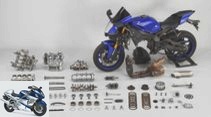
50 photos
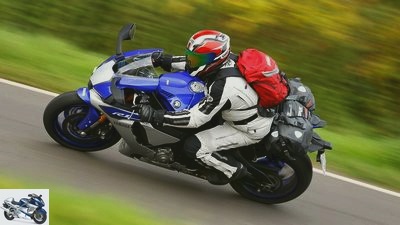
Rossen Gargolov
1/50
The Yamaha YZF-R1 has passed the MOTORCYCLE endurance test. It took her almost 3 years to cover the 50,000 km.
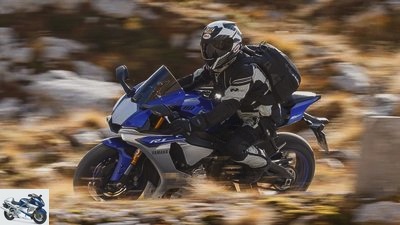
Arturo Rivas
2/50
As an uncompromising athlete, the R1 divided its riders into two camps right from the start. There were her ardent followers, who loved her for this sportiness, and those who held that against her. There was nothing in between.

Baumann
3/50
The R1 was also eagerly moved in winter.

Baumann
4/50
Large luggage is difficult to attach to the R1.

Jacek Bilski
5/50
After the end of the test, the R1 was dismantled, examined and measured.
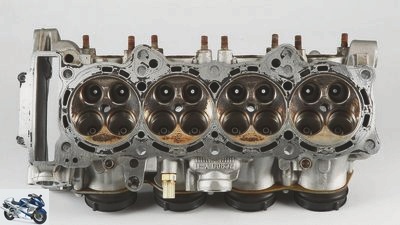
Jacek Bilski
6/50
A clean affair: like the piston crowns, the combustion chambers and exhaust ducts have remarkably little deposits. All valves close tightly, the seats are slightly widened, but all still within the operating tolerance.
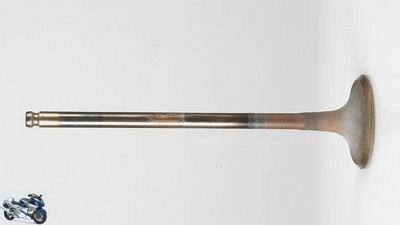
Jacek Bilski
7/50
Three valve shafts show slight traces of friction, but all shafts are dimensionally accurate, the shaft play in the green area. The valves can then be returned to their guides.

Jacek Bilski
8/50
Except for a tiny groove, all pistons are dimensionally accurate and in perfect condition, minimal deposits on the piston crowns, perfect top lands. The tracks of the piston pin are harmless.
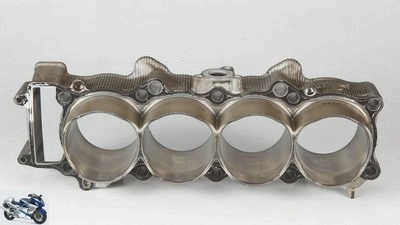
Jacek Bilski
9/50
The cylinders, like the entire engine, are a prime example of filigree lightweight construction. All cylinder liners are dimensionally accurate and not ovally widened, all four cylinders show minor, harmless traces of friction on the exhaust side.
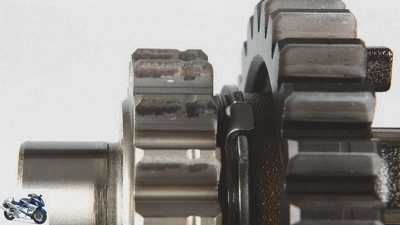
Jacek Bilski
10/50
The gearbox, which was replaced at 11631 km due to possible problems with 2nd gear, is a bit stressed. It is the 2nd gear on the input shaft that clearly shows its marks.

Jacek Bilski
11/50
The oil pump: slight traces of wear, nothing tragic and quite in the frame.
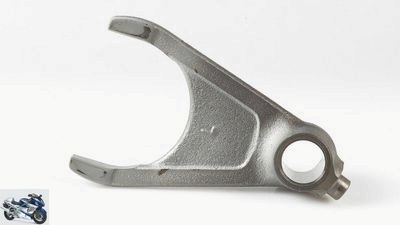
Jacek Bilski
12/50
Almost like new: apart from such minimal marks, the gearshift forks survived the test distance unimpressed. Only the grinding marks on the fork body are remarkable.

Jacek Bilski
13/50
Although only around 26,000 kilometers old, the pressure plate bears traces of pressure from the clutch springs, possibly a small piece of the mosaic indicating that the clutch can not be easily controlled.
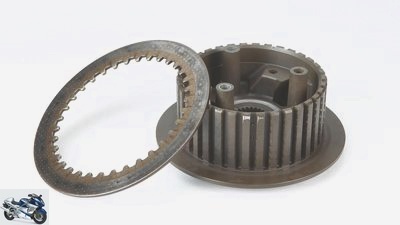
Jacek Bilski
14/50
Of course, friction and steel disks as well as the hub are less than 50,000 km under their belt, but at least after a little more than half the distance they are in perfect condition
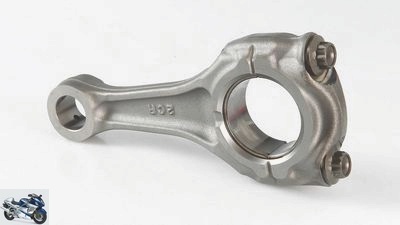
Jacek Bilski
15/50
The main and connecting rod journals have remained undamaged, the connecting rod bearings have tracks corresponding to the mileage, they are just outside the installation tolerance.
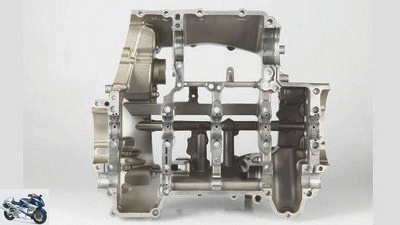
Jacek Bilski
16/50
The main bearings also have tracks, although they have not yet been removed. They are slightly outside the installation tolerances, with the bearing clearances being absolutely uncritical.
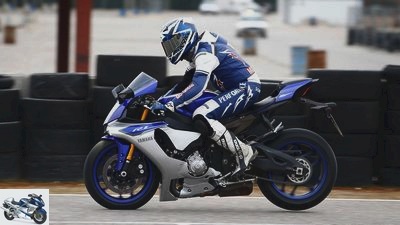
mps photo studio
17/50
On June 1st, 2015 we welcomed a brand new Yamaha YZF-R1 to our long-term test fleet. In the following you can see the previous defects as well as the accessories, exhaust and tire recommendations.

mps photo studio
18/50
Yamaha ordered the R1 to the workshop to replace the gearbox at the end of 2015. Reason: possible breakage of transmission gears, which could result from high loads or improper switching work. On this occasion there was a set of new clutch linings on guarantee due to frequent complaints about clutch metering.
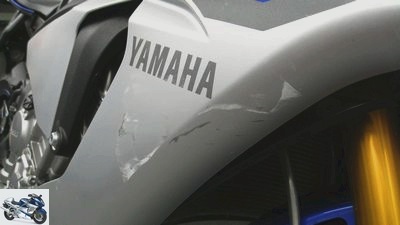
mps photo studio
19/50
Not to chalk the R1: A careless driver had overlooked the approaching colleague Schneider and R1 and knocked them down. Result: panel side battered, brake lever bent. After replacing these and other scratched parts such as the fork tube and engine cover, the test could continue.
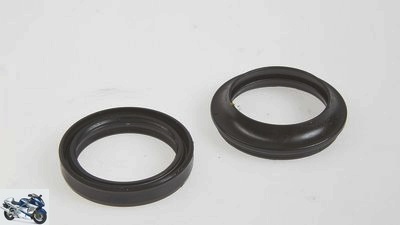
mps photo studio
20/50
Fork Simmerrings: Mileage 26,373 was the moment of increased maintenance work. In addition to the chain set, brake pads and battery, the R1 also got a replacement for its fork seals. The original had started to let the fork oil leak out easily and were exchanged in the course of the work mentioned.

mps photo studio
21/50
Clutch basket (center): The clutch is a tiresome and constantly present topic during this endurance test. Or rather the nagging about capricious engagement behavior. After replacing the pads at 11,383 kilometers, which hardly brought any improvement, the complete clutch was renewed together with the fork seals and the rubber shock absorbers.
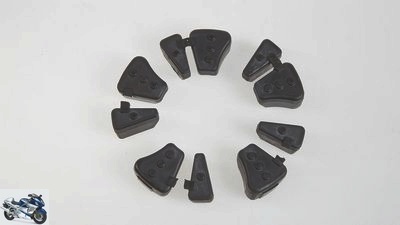
mps photo studio
22/50
During a tire change last winter on the bad weather Michelin Pilot Road 4, workshop boss Gerry Wagner noticed the partially crumbled, replacement rubber shock absorbers.

mps photo studio
23/50
Bridgestone S 21: Athletes who need a firm rubber for bold gas on the home track and during race training will be very satisfied with the S 21. But the Bridgestone does not convince on cold, wet days. It first wants to be brought up to temperature before it inspires with jagged feedback and precision. The S 20 Evo was better in the rain.
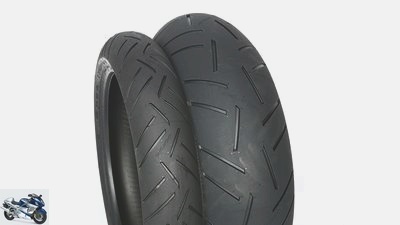
mps photo studio
24/50
Continental Sport Attack 3: The Conti athletes have always been delighted on the country road. The Sport Attack 3 has now improved significantly in quality even in the wet and has taken a big step forward. Even when taking a detour to the racetrack, it pleases with great feedback and handiness. But he is really in his element on the country road. Here he is a great partner to the R1.
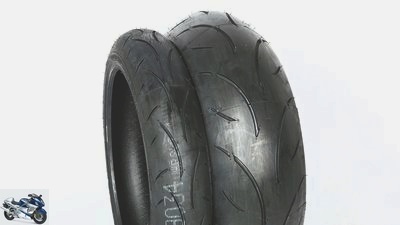
mps photo studio
25/50
Dunlop Sportsmart 2: The R1 and the Dunlop, a combination that doesn’t really come together. On country roads in particular, it is not easy to get it up to operating temperature, which affects handiness, feedback and steering precision. Its liability-
Reserves in the wet are okay, but overall there are much more suitable rubbers for the R1.

mps photo studio
26/50
Metzeler Sportec M7 RR: The egg-laying woolly milk sow for the R1. Its balance makes it a real all-rounder, spoiling sporty types with direct response, very good feedback and great handling when chasing the home route. The fact that it cuts a fine figure on the racetrack and does not buckle in the rain brings it to the fore as a tire for the R1.

mps photo studio
27/50
Michelin Pilot Power 3: If you don’t really want to let it rip in summer temperatures and have little to do with the racetrack, you’ve come to the right place. If the Power 3 quickly runs out of breath on the racetrack, it impresses on the country road with its good handling and steering precision, but above all with outstanding wet grip. A tip for sporty year-round pilots.
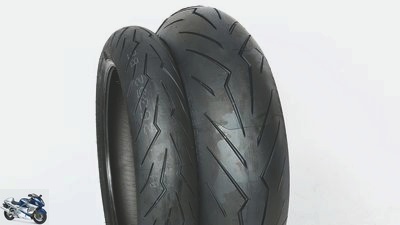
mps photo studio
28/50
Pirelli Diablo Rosso III: Ambitious sports pilots who are looking for grip and feedback at the highest level and who like to take their R1 to a track day should include the Rosso III on the shortlist. For that, however, they have to do something on the country road
Accept a longer warm-up phase and a little less handiness as well as decent, but not outstanding wet grip.
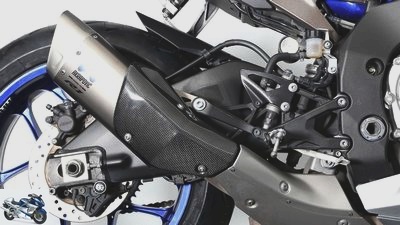
mps photo studio
29/50
Akrapovic: Yamaha’s own range of accessories has a complete titanium system from Akrapovic ready for solvent buyers for an impressive 2,919.95 euros. The slip-on pot is cheaper
made of titanium (929.95 euros). Great workmanship, 200 grams heavier than the original at 1.6 kilograms, it pleases with its good fit, easy attachment and beautiful carbon cover. The performance is at series level.
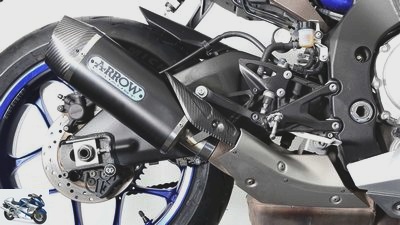
mps photo studio
30/50
Arrow Indy Race: Alpha Technik has the Arrows silencer with EG-BE ready with either a titanium jacket (639 euros), silver or black aluminum casing (545 euros). All variants have a carbon end cap. At 1.8 kilograms, the finely crafted Indy Race is, together with the Leo Vince, the heaviest silencer in the test. In addition to the good fit and the quality finish, there is a good output. Next to Akrapovic and Termignoni the strongest pot.
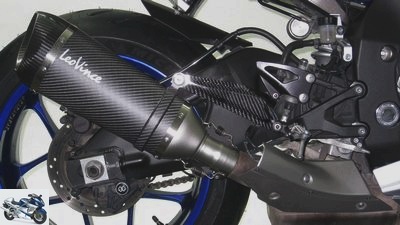
mps photo studio
31/50
Leo Vince Factory Slip on: The Leo Vince is supplied with a special carbon retaining strut. The assembly of the 569 euro exhaust muffler is a bit fiddly. At 1.8 kilograms, it is also not a lightweight. On the test bench, the very solidly made Leo Vince could not catch up to the competition despite the large damper volume. Up to 7500 rpm it is about the same, but then its power curve drops to up to 10 hp below that of the others.

mps photo studio
32/50
Scorpion Serket: Scorpion has two dampers. The larger, conical serket damper (with titanium shell 499 euros, stainless steel 389 euros) and the small, cannon barrel-like RP1-GP (carbon or titanium, 589 euros each). Both are beautifully made and assembled without a clamp or spring. In terms of performance, both are quite close to the original.

mps photo studio
33/50
Scorpion RP1-GP: At 800 grams, it is a real flyweight and saves 600 grams. Carbon or titanium, each 589 euros.
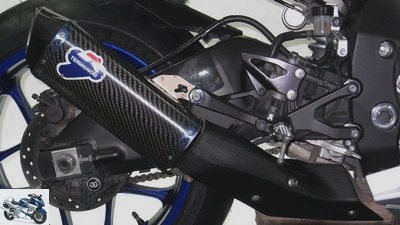
mps photo studio
34/50
Termignoni: The beautifully made Termignoni muffler (843.71 euros) is the only one that uses the original seal with a conical connector. The supplied cover could only be installed with a slight tension, but the 1.3 kilogram termignoni showed itself to be at its best in terms of performance. However, like the competition, it does not allow a performance increase. This would require a complete system.
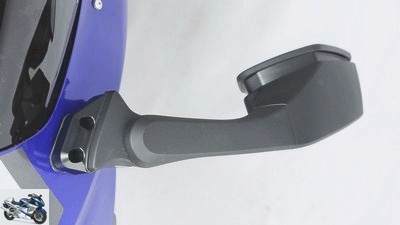
mps photo studio
35/50
Not cheap, but useful: milled mirror extensions (89.95 euros).
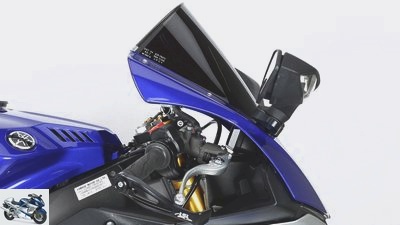
mps photo studio
36/50
The touring windshield from Yamaha offers good wind protection (149.95 euros), but tends to flutter at high speeds.
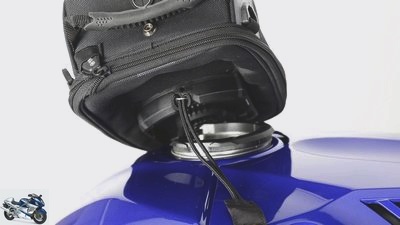
mps photo studio
37/50
The practical tank bag creates additional storage space. (119.95 euros) with Quicklock bracket (44.95 euros). With a volume of nine liters, they have
essential utensils for an excursion place.

mps photo studio
38/50
Useful, at least on the racetrack: brake lever protection.
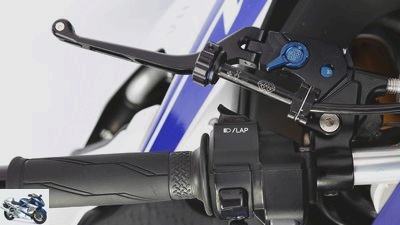
mps photo studio
39/50
the remote adjustment of the handbrake lever (109.95 euros) is just as appealing as the Racer brake lever protection. The Gilles hand levers (189.95 euros each) are elegantly made with many fine details.
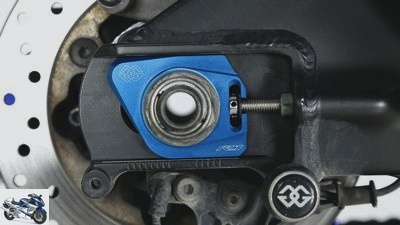
mps photo studio
40/50
The Gilles chain tensioners are a little feast for the eyes (99.95 euros).
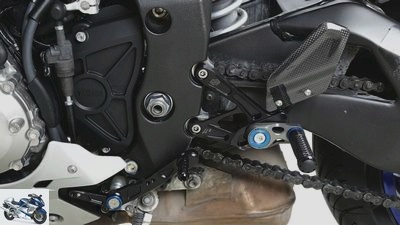
mps photo studio
41/50
For those who visit the racetrack more often, the adjustable Gilles pegs (729.95 euros) are worth considering. The pegs position the feet in a sporty high position, but offer excellent support. Appropriate pillion rests are available for 84.95 euros.

mps photo studio
42/50
Driver’s opinion, Manuel Fuchs, motorradonline.de: We won’t be friends anymore! The R1 is incredibly uncomfortable, stalls quickly in city traffic – and anyway: When the tachometer only changes to the green range at 8,000 rpm, third gear reaches well over 200 km / h and a motorcycle keeps saying “Shut up! “Signals, then we don’t fit together. A motorcycle is supposed to
Complement the rider’s personality – and the R1 contradicts mine. It’s up to me, not her.

mps photo studio
43/50
Driver’s opinion, Ralf Schneider, test editor: I was fascinated by the R1 from the start. The roar of the crossplane four-cylinder at high engine speeds, the brilliant steering behavior, the high steering precision. But the prerequisites for the spark to ignite are enough space in front of the front wheel and a high basic speed, which is only found when driving on the racetrack, but no longer in public traffic. The R1 is too strenuous for me to drive on country roads – and actually too good.

mps photo studio
44/50
Driver opinion, Tobias Wassermann, Fleet Manager: The R1 is exactly the right motorcycle for me. It’s really fun on the country road as well as on the closed-off route. And also when cruising
on the country road. Of course it is not a touring motorcycle, but the R1 is my favorite for my 250 to 300 kilometer tours in the Black Forest or Allgau. The crossplane engine sounds overwhelming, especially when the intake noise becomes increasingly aggressive at higher speeds. The R1 – my motorcycle.
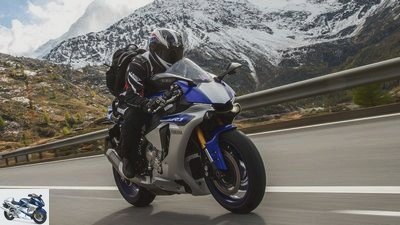
Arturo Rivas
45/50
The R1 was a welcome companion on brisk weekend tours and trips to the racetrack. On the other hand, she rarely went on long journeys fully packed.
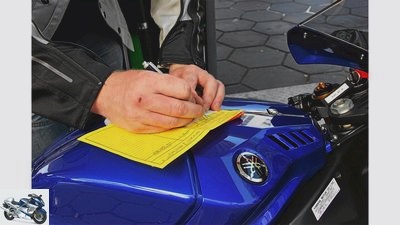
Hertler
46/50
In addition, every oil check, every tire pressure test and every exciting or interesting experience with the R1 are meticulously documented so that the endurance test delivers meaningful results.
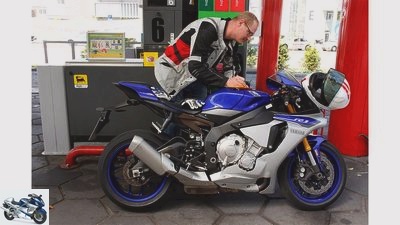
Hertler
47/50
… then clearly document the amount and costs in the logbook according to the mileage.
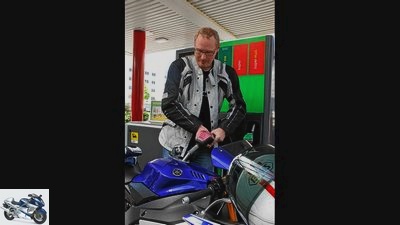
Hertler
48/50
Refuel nicely: first fill up the fuel tank with the trunk, …
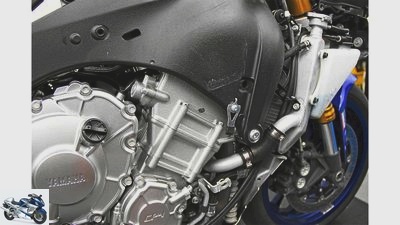
Hertler
49/50
Before that, the engine was still sealed, after all, the cross-plane unit should survive the 50,000 kilometer limit without unauthorized opening.

Hertler
50/50
Long-term test preparation: workshop manager Gerry Wagner reads out the control unit using a laptop. So every update can be traced.
Yamaha YZF-R1 in the 50,000 km endurance test
Loved, hated, definitely expensive
The Yamaha YZF-R1 has passed the MOTORCYCLE endurance test. It took her almost 3 years to cover the 50,000 km. Here you can read how the Japanese sport bike fared.
It usually takes almost two years for an endurance test motorcycle to have 50,000 kilometers on the clock. The YIt took amaha YZF-R1 around three years to cover this distance. However, this is not atypical for a super sports car – the Ducati 1199 Panigale also needed almost exactly three years in our long-term test fleet to reach 50,000 kilometers.
As an uncompromising athlete, the R1 divided its riders into two camps right from the start. There were her ardent followers, who loved her for this sportiness, and those who held that against her. There was nothing in between. It just left no one cold.
Coupling exchanged twice
Tobias Wassermann
The clutch had been replaced twice by the halfway point of the test.
As soon as the R1 was in the long-term test fleet in May 2015, it started. The driver’s log was enthusiastic about the great stability and greed for curves, one line further from the largely lack of suitability for everyday use. Too sharp engagement of the clutch, too little torque at the bottom, too long first gear. Some loved them for their sportiness, others scourged them for precisely that. Unimpressed by this, she reeled off her test kilometers. Incidents up to the first inspection at 10,000 kilometers: None, apart from the constant nagging about the clutch. It was only at 11,383 kilometers that she ordered an unscheduled recall to the workshop to exchange the transmission. On the occasion, the clutch linings were also replaced, which until then had repeatedly aroused displeasure due to sharp, poorly metered engagement.
Then it went on to eat the kilometers. The calm lasted only a short time, just a few thousand kilometers later the clutch began to make itself unpopular again with the familiar symptoms. Which is why the clutch was completely replaced under warranty at 23,300 kilometers.
Battery weak
Which took care of the clutch issue – for now. The winter that set in shortly afterwards brought the classy athlete into other hardships after frosty nights. Starting the engine in the morning required a great deal of sensitivity: when starting the engine, just don’t accelerate and after starting it is best to let it run for a few seconds in peace and quiet, was the recipe. Anyone who stalled the R1 when starting with a throttle that had to be explored or because of the engaged clutch, sometimes had a hard time bringing the R1 back to life. The weakly dimensioned battery did not allow many start attempts before it ran out of juice.
After 26,300 kilometers, the small power storage unit was due for replacement, along with the rubber shock absorbers on the rear wheel, fork seals and chain set.
Strange performance loss
Rainer Froberg
In search of the missing performance.
Immediately afterwards there were big eyes in the course of the exhaust test for the interim balance, because of the original 197 hp, the R1 only brought 190 to the test bench role. The whereabouts of the remaining seven horses was a mystery. Since the extensive troubleshooting was unsuccessful, seven missing horsepower in everyday life really do not play a major role and the R1 ran mechanically clean, the test was continued. So the R marched straight to the end of the endurance test without any abnormalities, you can see from, you guessed it, the recurring nagging about the clutch. However, they must not obstruct the view that the R1 otherwise performed its service for 15,000 kilometers without any problems, often also in the unpopular professional traffic. Freshly back from the 40,000 inspection, we went on an autumn drive. But it left a dull impression and tester Georg Jelicic complained about a lack of performance after a brisk stretch on the Autobahn. Back in Stuttgart, up to the test stand, disillusionment: only 179 hp were on the record. The hectic pace was great, also at Yamaha. Sensors were exchanged, error memory read out – without success. The only thing left was to inspect the R1 at the importer’s workshop. They promptly struck gold there. During the 40,000 inspection, the correction of the valve clearance is on the agenda for the first time. The authorized workshop had apparently reinstalled the intake camshaft, twisted by a tooth – the explanation for poor starting behavior and low performance, which now really cannot be blamed on the classy R1.
And a mistake that could easily have resulted in major damage. Confident in the robustness of their engine, Yamaha gave the green light to continue the test after correcting the timing. The R1 rewound the remaining 6,000 test kilometers unmoved.
Robust interior
During the final measurement of the performance, the R1 was there like a penny and even a tad faster than at the beginning. On the test bench, on the other hand, with 187 hp it only just delivered the performance as in the interim results. The pressure loss measurement, however, was quite reasonable and did not suggest either wear or defects. So what would come to light when you disassemble it? First of all, the combustion chambers, ducts and piston heads are amazingly clean. Only minimally widened valve seats and tight valves with dimensionally stable stems. Except for a tiny superficial score on one of the piston skirts, the pistons and liners look flawless.
The piston pins are all true to size, despite traces of wear on the DLC (diamond-like carbon) coating. Main and connecting rod bearings show a normal running pattern, all running layers are intact. The bearing pin contact pattern is also okay. However, Yamaha does not specify any wear limits for main and connecting rod bearings, only installation tolerances. And the warehouse clearance is just above what, strictly speaking, could be rated as “worn out”. However, the measured bearing clearances are not critical. For the main bearings, for example, the upper tolerance limit is 0.045 mm, while the bearing clearances are 0.05 mm and the outer bearing on the alternator side is 0.06 mm, which in itself is still within limits. As a result, and due to their optical condition, the bearings would not really be ready for scrap and would be good for many more thousands of kilometers. However, since the engine is open, we would exchange them in this process.
Noticeable 2nd gear
Jacek Bilski
Clear marks on the 2nd gear wheels.
The distance left clear traces on the 2nd gear wheel, which incidentally was the reason for the recall and replacement of the gear at the time. Apparently it is used excessively as a driving gear in everyday life due to the torque curve and translation and may not really be designed for this load. Otherwise, the transmission is in almost perfect condition, even the shift forks show only the slightest marks.
The clutch, already the third copy and only just under 27,000 kilometers old, is in good condition apart from minor pressure marks from the springs in the pressure plate. Possibly they are a piece of the mosaic of the criticized dosability. Although Yamaha are apparently not aware of any customer complaints about the clutch function.
The rest of the engine innards show at best the mileage appropriate to the mileage, such as the rotor of the oil pump or the selector shaft.
A good certificate can also be issued for the build quality of the R1. Screw connections, plugs, surfaces of frames and chassis parts can be seen even after three winters. Only one screw on the side stand was permanently rusted after three years of salt and spray water bombardment. The brake discs, on the other hand, show wear. The two front ones are still two tenths of a millimeter above the wear limit of 4.5 millimeters, the rear one already a tenth below. However, the front wheel bearings were ripe for replacement.
R1-driving is nothing for bargain hunters anyway. Even if she was careful with brake pads and drive chains and an average consumption of 6.7 liters is a lot, but still within limits for such a projectile.
Bad cost balance
Hertler
The R1 burned fuel for almost 3,700 euros over the test distance.
The inspections that are due every 10,000 kilometers tore a bigger hole in the budget. While the first went for a moderate 332 euros, the following two had to dig a little deeper into your pockets at 525 and 556 euros. The 40,000-series maintenance was really tough, when the valve clearance control was on the agenda for the first time and which cost a hefty 1,200 euros.
It has always been a little more expensive to have a special taste. And when it comes to driving fun, the R1 is really something very special for sports fans. In addition to the one-off refusal to start in the morning, it is primarily the cost balance that causes the R1 of the current year to fall behind in the ranking compared to its namesake, which was already tested in 2008. Only the unexplained and unsatisfactory clutch behavior and the noticeable second gear tarnish the otherwise mechanically solid performance of the crossplane four-cylinder.
Balance after 50,000 km
Cylinder head: There are remarkably few deposits in the combustion chambers. The valve seats are hardly widened, all valves close tightly. Valve stems and guides are all true to size. The same goes for the camshafts, which, like the rocker arms, are inconspicuous.
Cylinder / piston: The piston and cylinder are dimensionally accurate and have only minimal signs of wear. A piston skirt shows a score, overall very little oil carbon deposits.
Crank drive: Connecting rods and main bearings show tracks corresponding to the mileage. Your bearing play is slightly outside of the installation tolerance.
Power transmission: Clear wear marks on the second gear wheel on the transmission input shaft. Shift shaft and forks are perfect, clear pressure marks of the clutch springs in the pressure plate, timing chain tensioner with slight traces of running.
Frame / chassis: The paintwork and surface coatings are in good condition, rocker arms, swing arm and steering head bearings are free of play. Side stand retaining screw rusted tight, front wheel bearing defective, rear brake disc below wear limit.
Yamaha takes a stand
Yvonne Hertler
The Yamaha ambassadors Ralf Keller (2nd from right) and Karlheinz Vetter (right) were very satisfied with the result.
… to the grooves on the oil pump: The grooves are completely harmless to the mileage. Assemble and move on.
… to the tracks on the second gear wheel: The second is one of the most heavily used gears on a motorcycle like the YZF-R1 because the second is used very often. We wouldn’t switch it as it isn’t pitting.
… to the minimal grinding marks on a shift fork body: We cannot explain these at this point, but in any case without hesitation.
… to the tracks on the coating of the piston pins: Minimal wear, completely harmless. Assemble and move on.
… on starting difficulties and replacing the battery: These occurred primarily in winter. The R1 is definitely not the predestined winter motorcycle. Most motorcycles are mothballed in winter. For reasons of weight and space, the battery is chosen to be relatively small, so that it can reach its limits in sub-zero temperatures. We recommend charging the new battery carefully and “learning it.”", so that it has its optimum performance.
… to swap the clutch twice: From our market observation we have no abnormalities in this case; the wear could be due to increased use of the clutch due to the long 1st gear.
… to the coupling function: Again, there are no anomalies from the market.
… to the main and connecting rod bearings outside of the installation tolerance: The problem that Yamaha does not give any wear dimensions is actually something that we regularly encounter in endurance tests. The way they looked, you can put them back in and continue driving without hesitation.
Operating costs over 50,000 kilometers
Item Costs 20 liters of oil at 21.43 euros each 428.60 euros 3 oil filters at 13.75 euros at 41.25 euros 1 air filter 58.92 euros 12 spark plugs at 20.09 euros at 241.08 euros 1 set of rear brake pads 58.21 euros 2 sets of front brake pads at 127.59 euros 255.18 euros Shock absorber 50.21 euros Fork seal 31.65 euros 1 chain set 229.68 euros Brake fluid 8.18 euros Small parts, lubricants 305.82 euros Seals 81.94 euros Inspections and repairs 2,910 , 24 Euro tires (including assembly, balancing and disposal) 2,324.00 Euro fuel 3,671.31 Euro Total cost 10,696.27 euros Acquisition costs 18,790.00 euros Loss of value 8,340.00 euros Estimate (dealer selling price) 10,450.00 euros Costs per kilometer (without loss of value) 21.4 cents Costs per kilometer (with loss of value) 38.1 cents
Maintenance and repairs
Maintenance / repairs Mileage front and rear tires renewed, Metzeler Racetec RR K 37.756 gearbox, mirror and clutch completely renewed (recall) 11.383 front and rear tires renewed, Bridgestone S21 11.611 vehicle was changed to S21 after helmet test 13.046 front and rear tires renewed, Pirelli Diablo Rosso III 21,883 front and rear brake pads renewed 21,992 front and rear tires renewed (Michelin Pilot Road 4) 26,137 shock absorbers, fork seals (guarantee) as well as battery, chain set and air filter renewed 26,373 new front and rear tires (Michelin Power RS), front brake pads new 33,171 tires front and rear renewed, Michelin Pilot Road 4 40,838 loss of power detected, starting problems 43,500 intake pressure sensors renewed (due to loss of power) 44,200 inlet camshaft readjusted 44,300 motorcycle not started 46,130 fork seal right renewed 47,177
Reading experiences
Moritz Westenberger
Reader Moritz Westenberger loves his R1.
Here is a short summary of my R1M: approval May 2015, then initial inspection. Recall exchange 2nd gear. Criticism 1: Multiple visits to the workshop, as the battery is permanently discharged and even with the charger connected, the battery cannot start up after two weeks of idle time. Pushing is almost impossible and it takes at least 10 minutes to get to the battery. Criticism 2: The clutch grabs and is difficult to dose when starting. Criticism 3: performance characteristics (everything from 7000 rpm) for everything besides the racetrack ugly. Criticism 4: The temperature is permanently too high, especially when driving on the racetrack, for example after a few fast laps in Hockenheim (1.54 min), after rolling out in the pits always over 120 degrees. As far as I know, the piston crown cooling has also been changed in the meantime. Neutral point: Front brake (I still drive HP4 and ZX-10R, built in 2016) not good in comparison. Plus point: ingenious chassis (top handling, feedback, stability). I traded in the machine with 3,600 kilometers in January 2018.
Benno Goebel, by email
My RN32 (first registered in May 2015) has now accompanied me for almost 20,000 kilometers of track and country roads in a species-appropriate driving style. First of all: It’s beautiful, the sound is breathtaking (not standard), the seating position, the handling – for me as a hobby racer the perfect bike. I would buy them again in a heartbeat! Sure, it’s not my first choice for normal everyday use. Not even for travel or the like. But that’s not what it’s made for. So far there has been an unscheduled visit to the workshop: Callback, gearbox exchange. The only defect that caused (starting) problems was the battery. This was defective after 1.5 years. A lithium-ion battery is a good alternative! Otherwise she drives and drives and drives. The operating / maintenance and servicing costs are sporty. With a brisk driving style, I add an average of 0.5 l / 3,000 km of engine oil. No – there is nothing, simply nothing to complain about. To be recommended without reservation.
Moritz Westenberger from Berlin, by email
Mileage: 48,300, 04/2018
Baumann
A leaky fork seal on the right handle required an exchange. In addition, the front brake now seems a bit toothless. At low temperatures, the steering damper is a bit tough.
45,700 km: In the final spurt
Hardly out of the workshop, it went on an autumn drive, where the R1 was attested to be lousy starting and cold running behavior – pushing included thanks to the weakly dimensioned battery. Later, after a brisk drive on the motorway, a performance-spoiled pilot complained of losing it. Which the test bench later confirmed. This was followed by a long troubleshooting process that ultimately led to the importer in Neuss. There it turned out that the inlet camshaft was installed offset by one tooth after the valve clearance had been adjusted. Fortunately, the pistons and valves still had enough space, and after the correction the R1 runs again as usual.
Video of the exhaust test
Mileage: 42,000, 10/2017
At a mileage of 42,000, the Yamaha YZF-R1 has to undergo a major inspection with valve clearance control. This is an undertaking which, due to the tightness, has the character of detention and is estimated at 32 work values, i.e. 192 minutes of working time. On the occasion, the front light unit was also replaced, as one of the lenses had a crack. Whether rockfall or stress cracks remained unclear, in any case the unit costs just under 1,000 euros plus one hour of assembly time. Without the headlights, the cost of the inspection was still 1,200.85 euros.
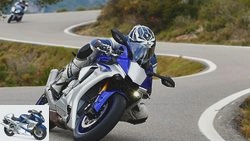
Super athlete
Yamaha YZF-R1 in the top test
Don’t complain, work!
read more
Mileage: 32,540, 4/2017
In connection with the endurance test interim balance in MOTORRAD 14/2017, the editors also felt retrofitting exhausts on the tooth. It turned out that the Yamaha YZF-R1 had lost six hp compared to the initial measurement at the beginning of the test: Now it still pushes 191 instead of a more powerful 197 hp.
Error messages occurred on the dynamometer: For the on-board electronics, it is implausible that the rear wheel 280 moves while the front wheel is stationary. However, the error could be deleted by means of system diagnostics at the dealer. The minimal reduction in performance of three percent remained.
However, it only takes effect from 9,000 rpm, so it only comes into play on race tracks or empty motorways. Nevertheless, the R1 was then inspected and measured again at the German Yamaha importer. First result: no major discrepancy between the two different test stands. The MOTORRAD copy is therefore well calibrated. Second result: Well?!
Pressure loss and compression measurements of the R1 long-term test engine show good, inconspicuous values. One suspicion: As part of the official recall, the R1 received a completely new gearbox – the input measurement was carried out before the replacement. This means that increased friction of the new parts in the second transmission may have an effect.
Mileage: 30,000, 3/2017
In the end the jerking got stronger again, but this time the dealer identified a different cause: the connecting webs of the shock absorbers in the rear wheel hub were broken. Therefore, there were now new rubbers at the 30,000 inspection.
Keyword rubber products: The slightly leaking Simmerrings of the upside-down fork had to be replaced. The brake fluid was also changed, which had a noticeable effect: The front brake now shines again with a clear, precisely controllable pressure point. "Now the R1 feels dewy again", shortly thereafter is a happy comment in the logbook.
Mileage: 26,373, 11/2016
The Yamaha YZF-R1 is currently causing a little deeper worry lines. On the occasion of the upcoming interim endurance test, the Akrapovic muffler from the Yamaha accessories program should give a taste on the test bench. Before that, there was an obligatory power measurement on the program, which turned out to be quite sobering with 186 HP compared to the 199 HP measured at the beginning. The check, including reading out the fault memory at the specialist dealer, did not provide any new information.
After all, two re-measurements produced 193 hp. In any case, it wasn’t on the test stand, which tests exactly as ever. We have not yet found an explanation for the loss of performance, but we are sticking to it.
Mileage: 23,330, 9/2016
In the case of the Nippon super sports car, one topic has been a common thread running through the logbook from the very beginning: the moderately adjustable, jerky clutch with a short sliding path. Anyone who changes from another motorcycle likes to stall the engine. In the meantime, the third clutch linings are already doing their grueling job, the clutch basket was replaced when the odometer reading was 23,330.
Mileage: 13,650, 4/2016
Yamaha ordered a large number of the R1 models delivered in 2015 to the workshop to replace the gearbox. In the worst case, second gear wheels can break under heavy loads due to a manufacturing defect. This has already happened in individual cases.
The recall also affects the MOTORRAD endurance test machine, one of the first machines to be delivered in Germany, which was therefore recently in the Yamaha dealer’s workshop. An enormous amount of work because the engine has to be removed and partially dismantled.
Both gear shafts with all gears were swapped. The dealer needed two working days for this. On this occasion, the clutch linings were changed as a gesture of goodwill, since the clutch finally engaged hard and difficult to dose.
Since then, the machine has been running without problems, but not entirely without criticism. The clutching clutch is criticized, especially when the engine is cold, you have to be very sensitive when starting off.
Mileage: 7,800, 9/2015
The Yamaha YZF-R1 is only at the beginning of the MOTORCYCLE endurance test. It was clear that such a racer requires compromises in everyday life. For example the hard seat upholstery, the very dry set-up of the shock absorber, the diffuse clutch pressure point and the thirst when driving fast, which requires driving to the next gas station after 200 kilometers at the latest. But who should resent the heating iron??
However, the odometer of the Yamaha YZF-R1 is no longer ticking. This is due to a somewhat optimistic turning maneuver by a car driver, after which contact between the car and the motorcycle could not be prevented. The damaged parts are currently being replaced by the importer.
License plate holder for Yamaha R1 (from 2015)




25th photos
Pictures: Yamaha YZF-R1 in the 50,000 km endurance test
To home page

Dentges
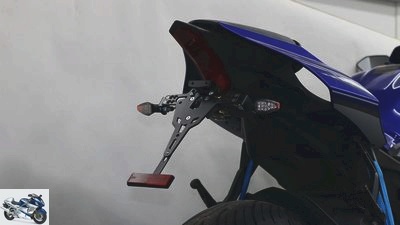
Dentges
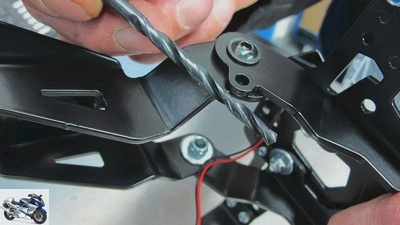
Dentges
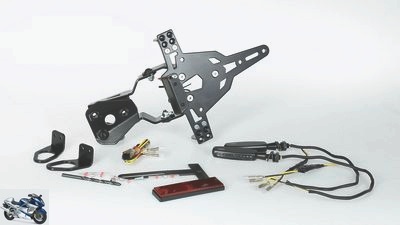
Dentges
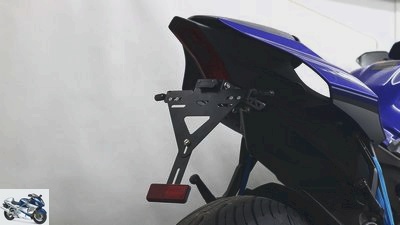
Dentges
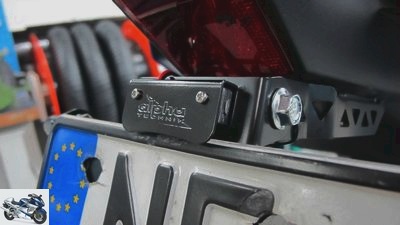
Dentges
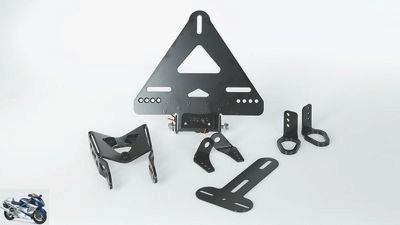
Dentges
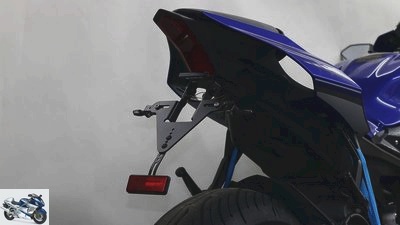
Dentges
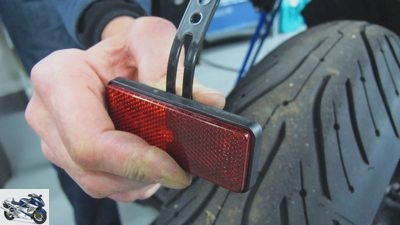
Dentges
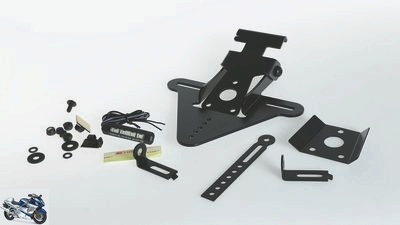
Dentges
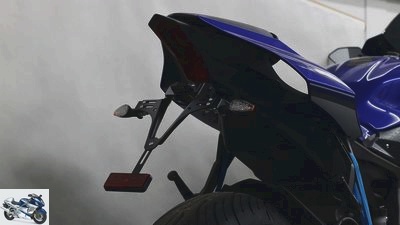
Dentges
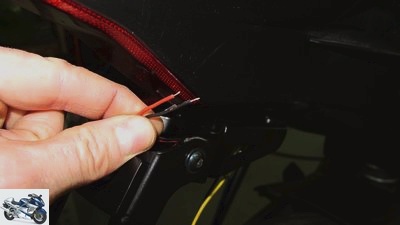
Dentges
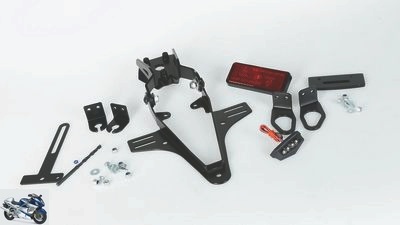
Dentges

Dentges

Dentges
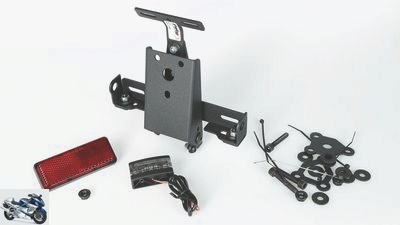
Dentges
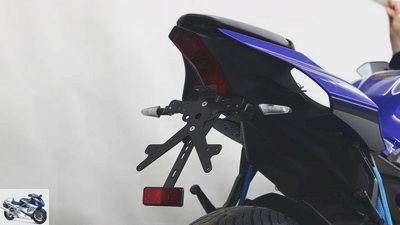
Dentges
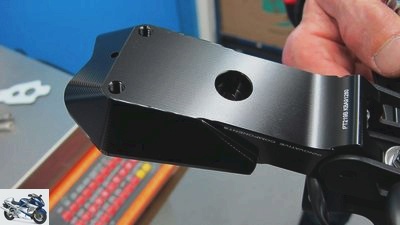
Dentges
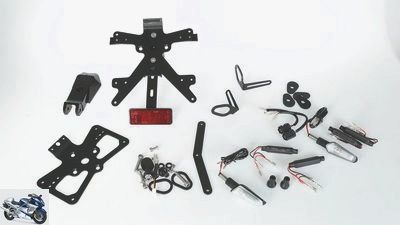
Dentges
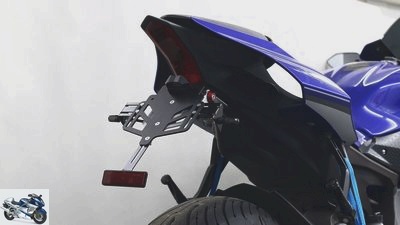
Dentges
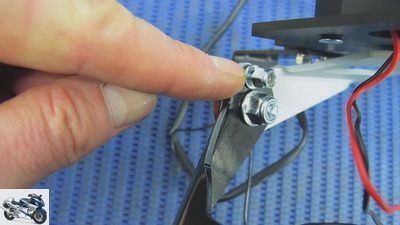
Dentges
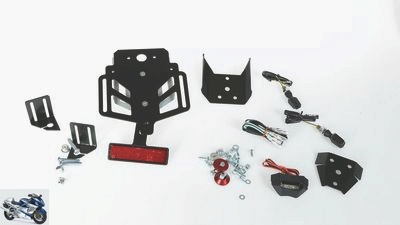
Dentges
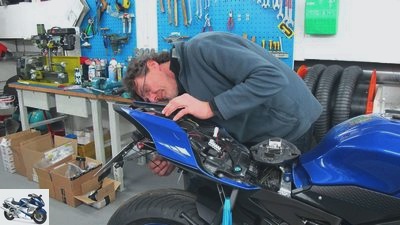
Dentges
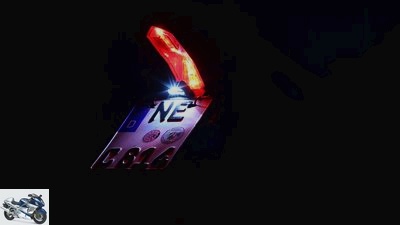
Dentges

Dentges
Related articles
-
Aprilia Shiver 900 in the 50,000 km endurance test
Andreas Bildl 32 photos Jorg Kunstle 1/32 Mileage at the time of the interim report in October 2019: 32,521 km. Whether vacation tour in summer or ……
-
Jorg Kunstle Top test Yamaha FZ1 / Fazer Let’s start now? We had to wait a long time for that: a naked Nippon athlete. Not rinsed soft, but light, firm…
-
Endurance test of the Harley-Davidson Heritage Classic
mps photo studio 16 photos mps photo studio 1/16 On June 6, 2018, the Harley-Davidson Heritage Classic 114 endurance test with 221 km on the clock…
-
BMW R 1200 R in the 50,000 km endurance test
42 photos BMW 1/42 How did the R 1200 R fare over 50,000 kilometers? BMW 2/42 BMW R 1200 R in the long-term test BMW 3/42 BMW R…
-
KTM 1190 Adventure in 50,000 km endurance test
markus-jahn.com 45 photos KTM 1/45 January 2013: It is already clear at the presentation – the new KTM is a great success. markus-jahn.com 2/45 July…
-
Endurance test KTM 950 Adventure
Photos: Jacek Bilski Endurance test KTM 950 Adventure The mill rattles… …but it holds. Despite constant rattling noises, the KTM 950 Adventure…
-
Endurance test Ducati Multistrada 950 2017
Jacek Bilski 34 photos Jacek Bilski 1/34 The Ducati Multistrada 950 has passed the MOTORRAD endurance test over 50,000 kilometers since May 2017. Hertler…
-
Endurance test Ducati ST 4 Sound miracle A feast for the ears and a feast for the ears: The dream of all four-valve Ducati fans who love to travel…
-
Siemer Endurance test BMW R 1150 R In quick succession It gave a brief and rarely controversial guest appearance: the BMW R 1150 R covered its 50,000…
-
Endurance test final balance Triumph Tiger 800 XC
Bilski 17th photos mps photo studio 1/17 The Triumph Tiger in the 50000km endurance test. The final balance. mps photo studio 2/17 Typical tiger: In…